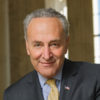Children with Epilepsy
Cannabidiol (CBD), a primary cannabinoid in marijuana, has been linked to incredible recoveries for children with epilepsy. NPR reports today that Parents of children with severe epilepsy had said amazing improvements when their children were given cannabidiol, a derivative of marijuana. The drug, a non-psychoactive compound that occurs naturally in cannabis, has been marketed with epithets like Charlotte’s Web and Haleigh’s Hope.
However, parents who elected to participate in the study were taking risks. So take this promising news with a dose of healthy skepticism. There has been no clinical data on cannabidiol safety of efficacy as an anti-epileptic.
This week, doctors are presenting the first studies trying to figure out if cannabidiol works. They say the studies’ results are promising.
The course of the study ended up impacting some of the participants adversely, prompting them to withdraw from the study. Still, roughly 84% of participants reported reduced convulsive seizures, or what are called grand mal or tonic-clonic seizures. These seizures went down by about half on average.
Researchers described the study as “The largest study presented at the American Epilepsy Society in 2014, with 313 children from 16 different epilepsy centers around the country. Over the course of the three-month trial, 16 percent of the participants withdrew because the cannabidiol was either ineffective or had adverse side-effects, says Dr. Orrin Devinsky, a neurologist at the New York University Langone Medical Center and lead author on the study.”
Devinsky says that some children continued to experience benefits on cannabidiol after the trial ended.
“In the subsequent periods, which are very encouraging, 9 percent of all patients and 13 percent of those with Dravet Syndrome Epilepsy were seizure-free. Many have never been seizure-free before.”
In addition to this study, 25 of those patients were followed for a year-long study, whose findings were also presented at the meeting. Some of those patients did better, but one ended up doing worse.
“A drug can induce an increase in seizures,” says Dr. Maria Roberta Cilio, a pediatric neurologist at UCSF Benioff Children’s Hospital who led that study. This happened with one of her patients. “For one particular child, the more the dose of was increasing, that increase was paralleled by an increase in seizure frequency,” she says.
The difficulty of treating epilepsy is well-known. Epilepsy can be one of the most difficult syndromes to treat. About a third of patients have an intractable form of epilepsy. It’s common for children and adults with treatment-resistant epilepsy to exhaust the list of anti-seizure medications to little or no effect. All of which underscores the need for further research.
“As a practitioner, I have had families move to Colorado, and many tried multiple different products,” Devinsky says. That makes it tough to tell what is or isn’t working. “As a doctor, I often don’t feel like I know which of many factors is contributing to a patient doing better or worse. We need rigorous, scientific data on this,” he says.



















